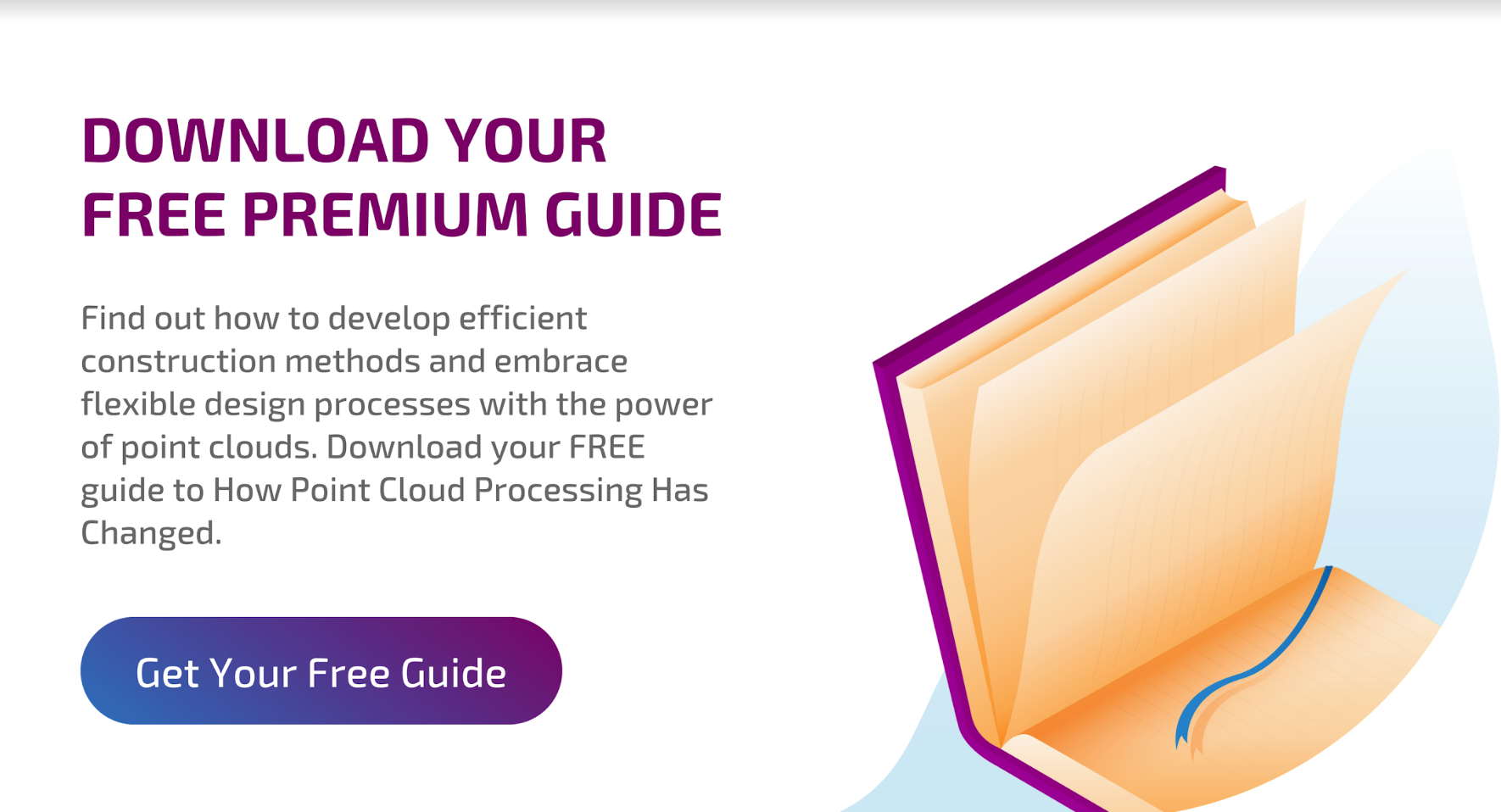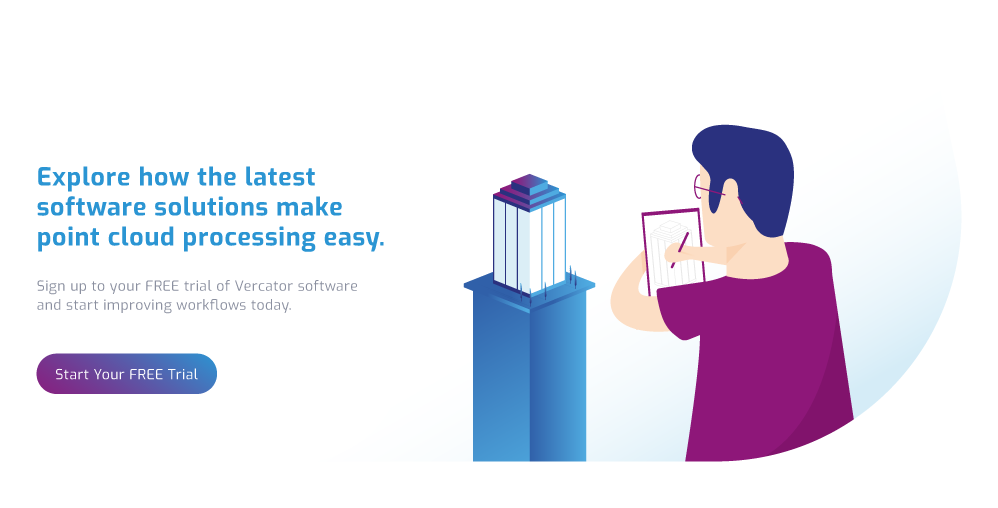A non-technical guide to 3D surveys and point cloud technology

Project managers and team leaders have all had experience dealing with technical specialists. Sometimes this can be a confounding and frustrating experience that can leave you wondering whether something might have slipped through your fingers which will result in an issue farther along the line.
Surveys and point clouds are a dense and opaque subject that some managers leave to others to understand. But it’s useful to know that a cheat sheet can get you 80% of the way there, and a cheat sheet doesn’t take that long to digest.
If you want to make sure that your processes and operations are optimised, you owe it to your team to get up to speed with the technical aspects of survey technology. Advancements in how surveys are undertaken are delivering dramatic efficiency improvements between different survey teams, opening up opportunities for efficiency gains to those that understand the latest the industry has to offer.
This is your guide to point cloud technology — making sure that your survey teams and engineers are delivering the results you need at a budget that fits.
What are point clouds, what is a point cloud survey?
Point clouds came into commercial use along with LiDAR (Light Detection and Ranging) technology and techniques in the mid-1990s. Effectively a companion technology that allows for computer programmes to make sense of 3D spatial data captured by advanced laser scanning survey instruments, point clouds represent physical space using large numbers of data points — the points of the ‘cloud’.
First, this data is put through a registration process before it can be passed to modelling software to produce any number of end digital outputs.
The level of detail and accuracy that can be produced by point clouds is hugely variable, ranging from millimetres to centimetres and beyond. For obvious reasons, a less accurate scan derived from less data is simpler to produce. But, what matters is to understand the level of error that your project can tolerate and make sure that the survey you commission delivers to those specifications.
Why you should care about point clouds in the first place
Point clouds provided a much-needed solution for surveyors — the ability to accurately map 3D physical spaces, reasonably quickly too. If you think about the extended and approximating processes that would have been required previously to create anything resembling a 3D map produced by a laser scanner, it is clear that such an output would have been incredibly challenging to achieve.
The ability to diligently map physical space delivers huge benefit to any construction project, renovation job or operation covering a large and complex physical space. Measurements can be captured in one go, then again during project activities, enabling specialists teams to extract the specific data that they need at that moment in time.
This reduces the time spent on site, improves team communication and drives efficiency. As a project manager or team leader, access to point cloud models delivers accurate information about a project in an accessible format — improving communication with specialists. For the majority of projects, using a digital twin derived from a point cloud is one of the most valuable investments you can make.
How are point clouds produced?
Point clouds are captured using one of any number of range finding devices. This can include ultrasound or photometry. But, LiDAR and terrestrial laser scanners are the most rigorous option, deployed in a high number of commercial use cases.
Laser scanners have a long range, but to function they need to be able to make line of sight measurements. For most physical locations, this limits their effective range to only a number of metres, forcing surveyors to take multiple scans to capture the varying facets of structures, objects and features.
The laser scanners simply catalogue every single individual range measurement they make — creating the 3D data that collectively become the 'point cloud'. But, the necessity to produce multiple scans leaves surveyors with a large number of point clouds, each individually only covering a section of the scene that will make up the final survey due to the line of sight limitations mentioned previously. For large, complex projects, the number of scans might span into the hundreds, or possibly even thousands.
To produce the final point cloud survey, these many scans need to be stitched together, or aligned — a procedure called point cloud 'registration'.
Why you should care about point cloud registration
Point cloud registration can be one of the most time-consuming aspects of completing a point cloud survey. This is especially true on larger, more complex projects where greater accuracy is required to detail greater areas.
Recent advances have gone some way to change this, but they are not ubiquitously applied across the survey community and industry. If you understand the available technology, you can significantly reduce the resources you need to expend in order to access comparable survey results.
Targetless vs targeted registration
Traditionally, there have been several approaches to achieving good registration. The first is the use of in-field, artificial registration targets (either free-standing spheres or chequerboard surface targets) that need to be placed in strategic locations to provide 'locks' for scan overlap. These common points can be aligned using software. Another method is to track scanning hardware in the field as scans are taken. This involves the use of features such as geopositioning, inclinometers and inertial measurement units (IMU) to ensure scan locations can be tracked. Another, more recent approach is the deployment of algorithmically-driven software solutions that identify natural features to use for scan alignment.
The traditional targetless approach to point cloud registration saves time in the field, but costs time in the office. Rendering and alignment can take a considerable amount of time, and issues with accuracy require manual inputs after each stage — effectively requiring the manual oversight of the entire alignment procedure.
This has ensured that both targeted and targetless registration are equally efficient solutions — if anything, often giving a slight edge to the use of field targets.
Vector-based, multi-stage point cloud processing
The evolution in how point clouds are created has occurred in how they are registered, and particularly how targetless scan data can be aligned and processed.
The latest software solutions break each scan into constituent components, rather than attempting to identify common features from the whole. To start with, the direction information fed from the scanner allows the program to extrapolate each 'point' into a vector. This enables the entire point cloud to be collapsed into a 'sphere' while still retaining its distinct characteristics — allowing for rotational alignment to be achieved independently.
Once rotationally aligned, rapid 2D point density techniques can be used to achieve horizontal and vertical alignments.
The long-short of this technical explanation is that point cloud processing time can be reduced, scaling up with larger projects to achieve time-savings of between 40%-80% . Technological advancements can also deliver a simpler and more accurate process that can have all of the manual inputs frontloaded. This means that the procedure does not need to be overseen — in all, drastically improving the efficiency of producing a survey.
Knowledge enables finding the best survey partners
By partnering with the right surveyors with the right technology, you can achieve massive cost reductions, allowing point cloud technology to be deployed for a wider range of tasks and procedures. This can range from multiple scans through a construction project, scan-to-BIM techniques, easy use of point clouds in even the smallest renovation projects and more. The practical applications become almost endless when the cost barriers are reduced.
Fundamentally, 3D surveying is on the edge of a renaissance. Point clouds and point cloud processing is central to that change. By accessing this technology while still on the bleeding edge, you can grab a massive competitive advantage within your industry. Make sure your survey partners understand the opportunities.
Tags: point clouds


